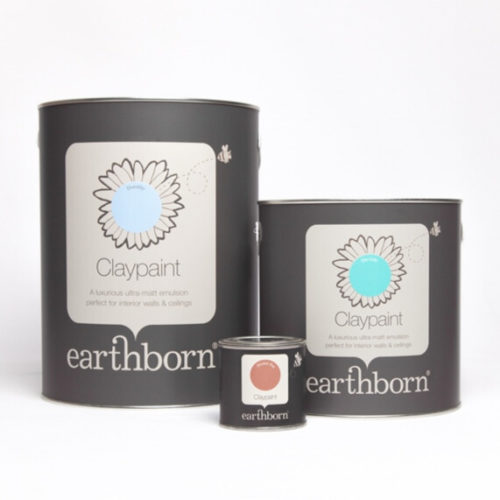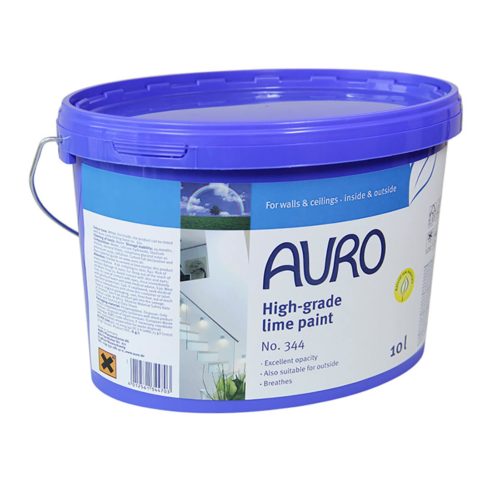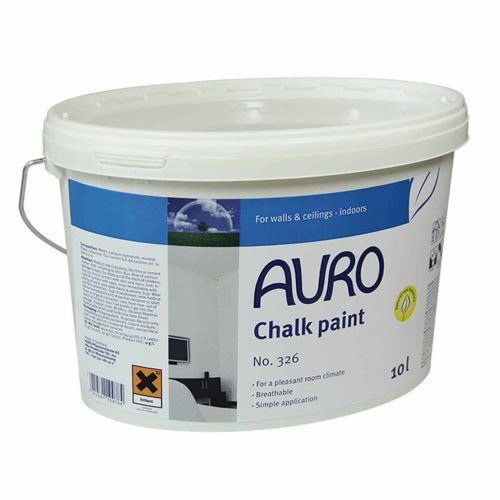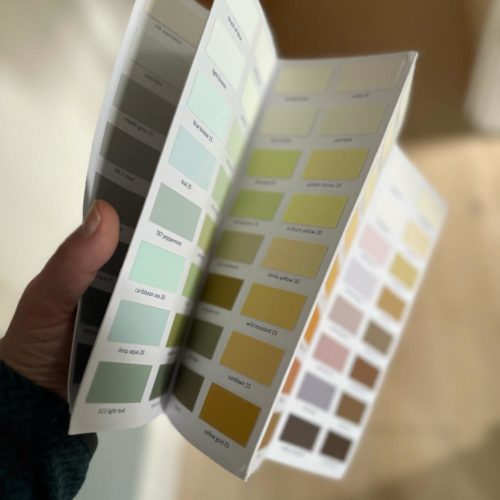Lime plaster and renders are natural moisture regulators, allowing your home to absorb and release water vapour instead of trapping it in the building fabric. Owners of solid wall heritage homes are increasingly aware of the importance of using these traditional building materials to avoid damp issues.
Painting with modern acrylic and vinyl based paints seals the walls, trapping moisture. This can lead to peeling paint, damp, mould, and salt damage. Using mineral paints avoids this issue, creating a breathable, or vapour open, surface which allows moisture to escape naturally.
But what are mineral paints, and how do they function as natural moisture regulators?
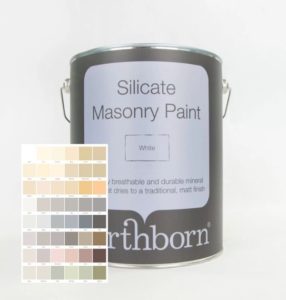
What Are Mineral Paints?
Mineral paints use natural minerals rather than plastics as their binder. Some form a permanent chemical bond with the surface while others rely on mechanical adhesion. Understanding the difference helps you choose the right system for your walls.
True Mineral Paints – Silicate
Paints with silicate as a primary ingredient bond chemically with mineral based substrates like lime plaster or stone walls. The process is called silification, and the paint's potassium silicate binder reacts with the substrate and creates a strong layer which becomes part of the wall.
Read more: What is silicate paint?
Mineral Based Paints – Lime, Chalk & Clay
Other mineral paints such as lime, chalk or clay based formulations use mineral binders that adhere mechanically. This means the paint bonds through interlocking with the substrate, anchoring itself to the surface. This paint type still breathes exceptionally well. These paints are suitable for projects and heritage restoration where softness and natural texture are desirable.
Read more: What is clay paint | Can clay paint be used on lime plaster?
Why Lime Plaster and Render Need Breathable Paints
Lime plaster and render work by absorbing and releasing moisture. When coated with a non-breathable film, moisture becomes trapped, leading to blistering, salt efflorescence or flaking.
Lime plaster can hold up to half a litre of water per square metre, so it needs a paint that lets that moisture escape. Breathable paints allow vapour to pass through the surface, helping walls dry naturally and stay mould free. Non-breathable paints act like cling film, sealing in damp and damaging the fabric of the building.
Read more: What is limewash | Best breathable paint for lime plaster | Filling & repairing lime plaster
How Paint Breathability is Measured – SD Values
Breathability is measured by an Sd value or equivalent air layer thickness. The lower the number, the easier it is for water vapour to pass through.
An Sd of 0.01 m means the paint offers the same resistance as 1 cm of still air. A value of 1.0 m is 100 times less permeable. Anything below 0.5 m is good, while Class 1 paints (below 0.14 m) are highly breathable.
Because "breathable" is not a regulated term, always check the Sd value on the product data sheet before buying. Not all paints that claim to be breathable are suitable for application to lime plaster and render.
Read more: What is breathable paint?
SD Classes of Breathability
- Class 1 – Highly Breathable (0 to 0.14 m)
- Class 2 – Moderately Breathable (0.14 to 0.5 m)
- Class 3 – Limited Breathability (0.5 to 1.5 m)
- Class 4 – Low Breathability (1.5 m and above)
Mineral Paints For Interior Lime Plaster
We offer several mineral based paints which are suitable for application to lime plaster.
Best Paints for Lime Plaster
- Earthborn Silicate Masonry Paint – This is a true mineral based paint, so it fuses chemically to the wall, forming a highly breathable finish (Sd 0.01 m). Suitable for interior and exterior use, strong, and long lasting.
- Auro 326 Chalk Paint – Traditional lime and mineral based chalk paint with a soft matt finish. Titanium dioxide free and highly breathable (Sd < 0.05 m). Excellent for basements or rooms with humidity fluctuations.
- Earthborn Claypaint – Clay and chalk based emulsion with exceptional breathability (Sd 0.02 m). Its ultra matt texture softens light and improves air quality, making it ideal for bedrooms and living areas.
- Auro 344 Lime Paint – Aged lime formulation giving a classic chalky appearance. Carbonates gradually, forming a micro porous surface, perfect for period interiors and listed properties.
Exterior Mineral Paints for Lime Render
Exterior lime render needs both durability and vapour permeability. True mineral systems such as silicate and lime paints perform best outdoors.
- Earthborn Silicate Masonry Paint – Creates a long-lasting mineral bond that resists weathering while remaining vapour open. Excellent for lime render, stone, and brick.
- Auro 344 Lime Paint – Suitable for exterior facades, providing a natural breathable coating that develops patina over time.
- Graphenstone Grafclean Mid Sheen – A mineral-based paint enhanced with graphene for added strength and coverage, suitable for modern and historic lime renders.
Common Mistakes and How to Avoid Them
When using mineral based paints, the most common mistake is not taking the time to prep your surface, and rushing application.
- Painting before the lime has cured leads to poor adhesion and peeling.
- Using acrylic (plastic) primers traps moisture and halts carbonation.
- Applying thick coats slows drying and can cause cracking.
- Painting in cold or very sunny conditions results in patchiness.
- Skipping proper cleaning or dampening of mineral surfaces reduces adhesion.
- Lime paints develop best through patience and thin layers.
A little extra time taken during application will greatly increase the lifespan of your finish, and protect your investment in your home.
Alternatives to Mineral Paints for Lime Surfaces
Other breathable coatings can be used with lime depending on the finish you want.
- Limewash – A pure lime and water mix that weathers gently and protects masonry as a sacrificial layer. It can be time-consuming to apply and does need reapplication more regularly than other paints.
- Distemper – A chalk and natural glue formulation giving a powdery heritage finish.
- Casein Paint – Uses milk protein as a binder to create a durable breathable coating for interior walls.
These types of paint are especially good for very old or listed properties where maintaining traditional appearance is important.
Are Mineral Paints Right for Your Project?
Mineral paints are an excellent choice for lime plaster and render when correctly matched to the surface. If you need any advice on your next project, our expert team will be happy to help. Contact us for advice on the best mineral paint to use on your substrate.
Our mineral based paints are available in a wide range of natural colours. Grab yourself a free colour chart and see for yourself!


